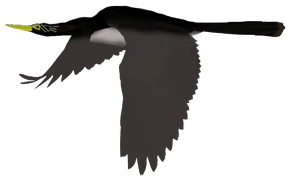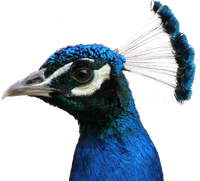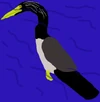m (Created page with "The '''Frost Anhinga''', ''Anhinga frostensis'', is a species of darter found in Frost region of Devonshire; Potsdam and Shire. It a cormorant-like bird which places it in the su...") |
mNo edit summary Tag: sourceedit |
||
| (25 intermediate revisions by the same user not shown) | |||
| Line 1: | Line 1: | ||
| + | {{speciesbox |
||
| ⚫ | |||
| + | | genus = Anhinga |
||
| + | | species = frostensis |
||
| + | |name=Frost Anhinga |
||
| + | |authority={{Travis}}, 2301 |
||
| + | |display_parents=4 |
||
| + | |status=LC |
||
| + | |status_system=IUCN3.1 |
||
| + | |status_ref=<ref name= IUCN>Future IUCN</ref> |
||
| + | |image=Male Frost Anhinga in flight.png |
||
| + | |image_width=290px |
||
| + | |image_alt= |
||
| + | |image_caption=Nominate subspecies |
||
| + | |binomial=''Anhinga frostensis'' |
||
| + | |binomial_authority={{Travis}}, 2301 |
||
| + | |subdivision=<center>'''''A. f. frostensis'''''<br> |
||
| + | '''''A. f. travisii'''''</center> |
||
| + | |subdivision_ranks= Subspecies |
||
| + | }} |
||
| + | {{This is a made-up species}} |
||
| ⚫ | |||
| ⚫ | |||
| ⚫ | |||
| ⚫ | |||
| − | Travis's Anhinga, Europa Anhinga (sometimes the Devonshire Anhinga is called this too), water turkey, snakbird, Frost darter. |
||
| + | {{othernames |
||
| + | |english=Travis's Anhinga, Europa Anhinga, Frost Darter, Water Turkey, Snakebird |
||
| + | |german=Frost Schlangenhalsvögel |
||
| + | |french=Anhinga de Frost |
||
| + | |spanish=Pato aguja frostica {{verify source}} |
||
| + | }} |
||
==Description== |
==Description== |
||
| Line 30: | Line 54: | ||
===Reproduction=== |
===Reproduction=== |
||
| + | |||
The males' plumes becoming longer and more prominent. The males' may also flush with blood, becoming a pinkish-yellow. He will bow, bring the female sticks or fish. If she accepts, he will mate with her. Pairs are monogamous but sometimes polygamous. |
The males' plumes becoming longer and more prominent. The males' may also flush with blood, becoming a pinkish-yellow. He will bow, bring the female sticks or fish. If she accepts, he will mate with her. Pairs are monogamous but sometimes polygamous. |
||
| Line 39: | Line 64: | ||
It is found in the Frost region, but it is a vagrant to other regions. It is also found in Shire and Potsdam. It is found in lakes, rivers and large streams. Sometimes near the ocean, when food is scare. |
It is found in the Frost region, but it is a vagrant to other regions. It is also found in Shire and Potsdam. It is found in lakes, rivers and large streams. Sometimes near the ocean, when food is scare. |
||
| − | It does not migrate or is not known to. |
+ | It does not migrate or is not known to. |
| + | |||
| ⚫ | |||
| + | See table. |
||
==References== |
==References== |
||
| + | {{Reflist}} |
||
| + | |||
| + | {{DEFAULTSORT: Anhinga, Frost}} |
||
| + | |||
| + | {{navbox |
||
| − | <references/> |
||
| + | |header1=Projects |
||
| ⚫ | |||
| + | |content1={{Project Aves}} |
||
| ⚫ | |||
| + | {{Project Suliformes}} |
||
| − | [[Category:Pelecaniforms]] |
||
| + | {{Project Anhingidae}} |
||
| + | {{Project Made-up Species}} |
||
| + | }} |
||
| ⚫ | |||
| + | [[Category:Michelle's made-up species]] |
||
| + | [[Category:Animals described in 2301]] |
||
| + | [[Category:Species named after places]] |
||
| ⚫ | |||
Latest revision as of 19:42, 14 July 2017
| Frost Anhinga | |
|---|---|

| |
| Nominate subspecies | |
| Scientific classification | |
| Kingdom: | Animalia |
| Phylum: | Chordata |
| Class: | Aves |
| Clade: | Aequorlitornithes |
| Clade: | Ardeae |
| Clade: | Aequornithes |
| Order: | Suliformes |
| Family: | Anhingidae |
| Genus: | Anhinga |
| Species: | A. frostensis |
| Binomial name | |
| Anhinga frostensis Travis, 2301 | |
| Subspecies | |
|
A. f. travisii | |
This is a made-up species!
This article contains made-up species not found on Earth.
The Frost Anhinga, Anhinga frostensis, is a species of darter found in Frost region of Devonshire; Potsdam and Shire. It a cormorant-like bird which places it in the superfamily Phalacrocoracoidea. It is similar to other anhingas in the family Anhingidae.
It is a common species and is under no threat; however, the past draining of its habitat may change its status to near threatened.
| Click for other names | |
|---|---|
| Other common names | Travis's Anhinga, Europa Anhinga, Frost Darter, Water Turkey, Snakebird |
| French | Anhinga de Frost |
| German | Frost Schlangenhalsvögel |
| Spanish | Pato aguja frostica[verification needed] |
Description
The Frost anhinga is a large bird, 33-35" (85-89 cm) long, with its bill being comprised of about 10" (26 cm) long. Its wingspan is 40" (1.01 m). The male is a black and grey bird with a white belly and striking white crest feathers. The crest becomes more prominent in the breeding season. The female is mostly a grey bird with no crest feathers. In both sexes, the bill and feet are yellow and the eyes are orange. In juveniles, their feet are mostly dull yellow and their eyes are brown.
The travisii subspecies is slighter smaller than the nominate subspecies.
Similar species
It should not be confused with cormorants, which have hooked bills. The range does not overlap with the rarer anhinga and Devonshire anhinga, which can both be found in Glennshire.
Behaviour
Since it lacks oil that keeps their wings dry, they must stretch their wings out to dry. Often soars. Can swim underwater occasionally, but usually swims with its head above water.
Diet
It is shown to feed on fish, frogs, tadpoles and other vertebrates. Sometimes insects are taken. It is a clever bird and is shown to put small, weak and dying fish in its bill to attract larger fish [2].
Calls
Said to make soft grunts and clicks, as the tongue hits the top of the mouth.
Reproduction
The males' plumes becoming longer and more prominent. The males' may also flush with blood, becoming a pinkish-yellow. He will bow, bring the female sticks or fish. If she accepts, he will mate with her. Pairs are monogamous but sometimes polygamous.
The incubation period is 34-40 days. The chicks fledge in about ten weeks.
Distribution
It is found in the Frost region, but it is a vagrant to other regions. It is also found in Shire and Potsdam. It is found in lakes, rivers and large streams. Sometimes near the ocean, when food is scare.
It does not migrate or is not known to.
Other names
See table.
References
| Projects | ||||||||
|---|---|---|---|---|---|---|---|---|
| ||||||||




